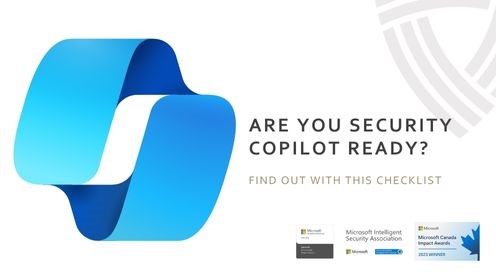
Vulnerabilities are discovered daily across all technologies. Multiply proliferating vulnerabilities across today’s complex technological environments and you get a hamster wheel of never-ending risk.
For years, vulnerability management has been a vital part of every business’s security program. Not only does it identify possible vulnerabilities within your network, but it also establishes a system to prioritize possible threats and minimize your attack surface. Often, compliance regulations even require these programs.
But today, traditional vulnerability management programs are failing, internal IT teams are overwhelmed, and there is no solid proof to show that your tests are actually effective. So, what can you do? In this post we will take you on a deep dive into some reasons your vulnerability management program could be failing, and some best practices on how to ensure better results moving forward.
Why is traditional vulnerability management failing?
Vulnerability management is more than just a software tool that scans devices and produces a list of vulnerabilities. According to a recent Forrester Global Security Survey, 49% of organizations that suffered a security breach in the last year track anomalous behavior back to software vulnerabilities.
Unfortunately, traditional forms of vulnerability management are failing because businesses are failing to balance their people, processes and technologies. Oftentimes, organizations have too many overlapping tools, favor spreadsheet asset lists, and have a constantly changing IT environment that makes accurately tracking assets nearly impossible.
On top of all that defunct and legacy, vulnerability management tools and technologies are hindering your team’s ability to detect newly sophisticated attack methods; allowing attackers into your network without detection.
Some other common reasons your vulnerability management program could be failing include:
- A conflict between Security Governance and business priorities.
- Security operations teams are simply overwhelmed and are suffering from alert fatigue. It is highly ineffective to have your IT team try to balance running the program, opening tickets, and patching systems.
- Your average Vulnerability Management report is about 1000 pages long and provides no business context or value.
- The inability of your Security Governance Program to correct issues in a sustainable manner.
Above all, problems with your vulnerability management program stem from four root causes, outdated or insufficient technology, an inconsistent approach, poor team structure or a lack of classification and prioritization.
How can you fix this?
Vulnerability Management Best Practices
Vulnerability management is a defined and testable process that ensures people and technology work and communicate efficiently and effectively. To report software vulnerabilities and ultimately mitigate risk, this process should be performed regularly.
If you are looking to regain your security posture with an updated vulnerability management program, here are some best practices to keep in mind:
- Plan ahead and establish KPIs: As with any other business activity, you should start by establishing Key Performance Indicators (KPIs). These will guide your security team and establish realistic goals to work towards. Some good KPIs to include are vulnerability coverage, scan frequency and patching duration.
- Understand your attack surface: You must include all elements of your attack surface in your vulnerability management program. This includes web applications, cloud instances, mobile devices, IoT devices, etc. apart from your traditional network assets. Leveraging machine learning and real-time dashboards like in Difenda’s Advanced Vulnerability Management will enable you to gain full visibility into your attack surface with ease.
- Build out your database: Relying on overlapping tools or spreadsheet lists can make it difficult to accurately track assets, especially in a changing IT environment. Map out and identify all your digital assets to gather information on your network infrastructure. You can then categorize and prioritize these assets to ensure your business and operational focus’ are aligned.
- Leverage automation: To address the increasingly complex security environment it is essential to leverage automation capabilities wherever possible. For example, automated asset management frameworks that improve connectivity and understanding across your organization or automate prioritization with risk scoring systems. Automation will help to increase compliance, reduce human error and make your program run more efficiently.
- Efficient reporting: New vulnerabilities are discovered daily across all technologies. If you can’t create fast and effective reports that enable team members to make remediations quickly, your vulnerability assessment is useless. The way information is presented and shared dictates how fast and efficiently the gaps in your system are closed. You need a system that allows you to alert the appropriate people with the right information quickly and seamlessly.
- Prioritization: This is non-negotiable. Leverage your threat intelligence database and KPIs to establish custom prioritization measures. Prioritize remediation activities based on additional business context (such as asset sensitivity) to allow for streamlined risk deferment and further assessment capabilities. Effortlessly prioritize and assign remediation responsibilities by leveraging the Difenda Shield vulnerability response module.
- Accountability and patching: Everything is irrelevant without effective patching systems and accountability measures. Re-assess newly patched systems or segments to ensure vulnerabilities are corrected.
How to Choose a Vulnerability Management Service Provider
To stay abreast of the latest changes made in its software, new systems added to their network, and regularly discovering new vulnerabilities many organizations are now choosing to outsource their vulnerability management program. Services like Difenda’s Advanced Vulnerability Management. Not only does this eliminate staffing problems, but it can also help provide added business context and more valuable outcomes.
Your vulnerability management vendor needs to be able to help you identify vulnerabilities, prioritize assets and provide valuable outcome-driven reports.
Most vendors will claim to have these capabilities, regardless of their actual level of competence, so how should you differentiate service providers?
When looking to outsource your vulnerability management program this is what you need to look for:
- An actionable plan to consistently scan the environment.
- An updated configuration management database with classification capabilities.
- Automation capabilities that prioritize assets based on criticality.
- A Service level agreement and accountability measures for internal patching cycles.
- Live and on-demand reporting that provides increased visibility into your network and vulnerability management program.
Do you think your vulnerability management program is failing? Download the Advanced Vulnerability Management eBook!
Simplify vulnerability management processes by leveraging automation, business intelligence and real-time visibility with Difenda.




